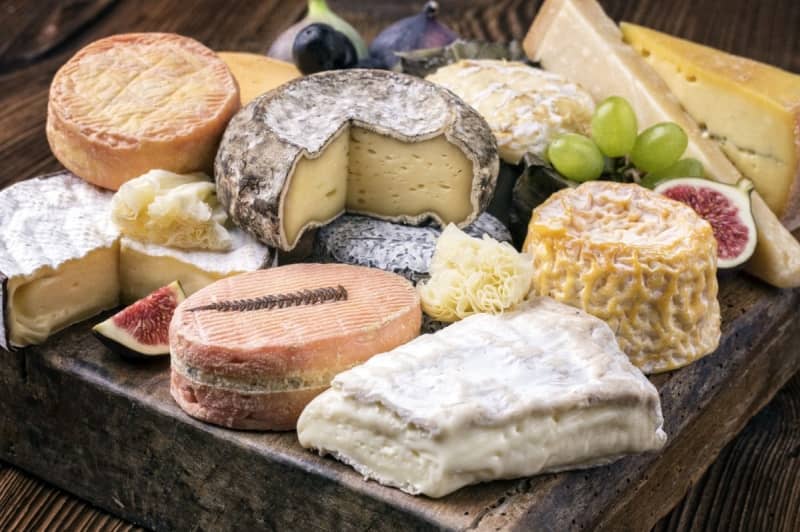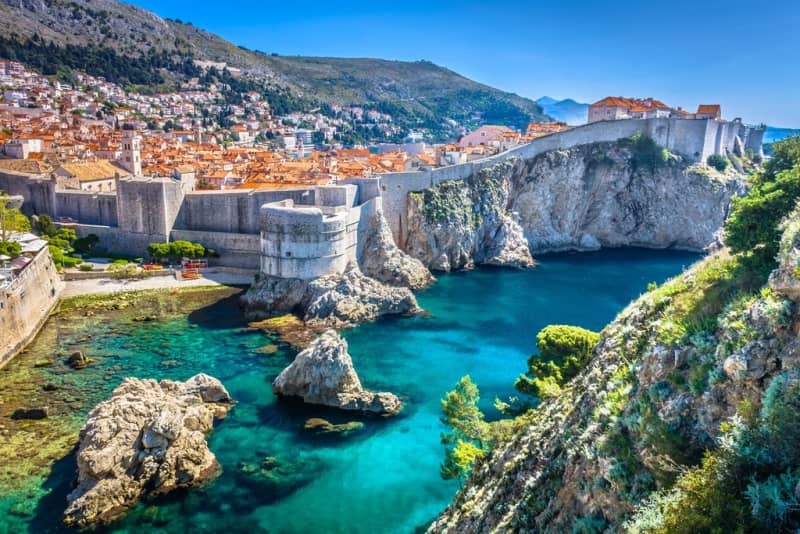There is an interesting history of milk and honey, or better described as dairy and honey, as described in biblical prophesies, and to help understand the origins of the current peoples of the world.
In the 8th century BC, the prophet Isaiah prophesied that Jesus, the man born of the virgin as the Son of God, would eat butter* and honey:
“Butter and honey shall he eat, before he knows to prefer evil or to choose the good.” (Isaiah 7:15, LXX)
*(Butter was a way of preserving milk in that day without refrigerators, so butter and cheese were likely the dairy consumed by southern peoples from warm climates.)
Isaiah then prophesied that the people who would be left after the destruction of Jerusalem would be consuming lots of milk and honey.
“And it will be from the much drinking of milk (everyone being left behind upon the land shall eat butter and honey” (Isaiah 7:22, LXX)
So I asked, who were the people who were left after the destruction of Jerusalem in 70 AD?
It was the Romans.
In 135 AD, Jerusalem was rebuilt as a Roman city which it continued as for 200 years. In 335 AD, the Church of the Holy Sepulchre was built and the Byzantine period began. The Byzantine Empire was the eastern Roman empire that began after Constantine I converted to Christianity. The Land of Israel had become a Christian country.
 Church of the Holy Sepulchre, Jerusalem, built in 335 AD
Church of the Holy Sepulchre, Jerusalem, built in 335 ADSo for nearly 500 years after Christ – half a millennia – the people who inhabited the land of Israel/Palestine were Christian – specifically, Roman Christians. That is, various European ethnic peoples under the broad empire of Rome – not just Italians.
https://jewishvirtuallibrary.org/timeline-for-the-history-of-jerusalem-4500-bce-present
A historical source discusses the Roman’s love for cheese:
“Curiously, the Greco-Roman disdain for dairy stopped short at cheese. In Rome, cheese was eaten by both the rich and the poor. A considerable variety of hard, soft, and smoked cheeses were produced in the city, and others were imported from around the empire.
Smoked goat’s-milk cheese from Velabrum, the valley by the Forum that runs up to Capitoline Hill, one of the seven hills of Rome, was especially popular—part of a general fondness for smoking foods. Cheeses were often given as gifts, and they were a standard breakfast food, along with olives, eggs, bread, honey, and sometimes leftovers from the night before.”
https://www.atlasobscura.com/articles/history-of-milk
 Italian cheese is known throughout the world. They take cheese very seriously.
Italian cheese is known throughout the world. They take cheese very seriously.So the Romans who inhabited the land of Israel after 70 AD loved cheese and honey, just like the Bible prophesied 1,000 years earlier.
What’s more, is that even today, Italy is known for its hard cheeses such as parmesan and mozzarella (think pizza and pasta), so the love for cheese survived the millennia.
“Cheese production in Italy had its origins when Gorgonzola was made in the Po Valley in 876 A.D. Italy also became the cheese-producing hub of Europe in circa the 10th century.”
https://theprouditalian.com/13-most-popular-italian-cheeses/
Not just Italy, but also France, Germany, England, and the Netherlands. Even the Vikings to the north loved cheese and dairy. It goes as far back as 4500 BC – which was the Great Flood of Noah.
“Cheese discovered on the Dalmatian coast push back the origin of cheese making in Europe to a time long before the arrival of lactose tolerance genes.”
https://www.sciencedirect.com/science/article/pii/S096098221831337X
What’s the Dalmatian Coast? It’s on the coast of Croatia, which is a short boat ride west across the Adriatic Sea to Italy. South of Croatia besides a couple small countries is Greece, and you can take a boat from Greece directly to Israel.
 Dubrovnik is one of the most famous cities on the Dalmatian Coast
Dubrovnik is one of the most famous cities on the Dalmatian Coastin southern Croatia on the Adriatic Sea, across from Italy.
Unlike the Romans who preferred cheese but not liquid milk (because cheese kept better in the warmer climates before the age of refrigerators) the Dutch preferred milk, butter, and cheese.
“In the country’s early years, the Dutch were singled out as a crude and comic people endlessly engorged on milk, butter, and cheese. … The upper classes prided themselves on setting their tables with several types of butter. The Dutch enjoyed whey or buttermilk with breakfast—even in the poorhouses, breakfast was buttermilk and bread—and butter was used wherever possible. “
https://atlasobscura.com/articles/history-of-milk
Strangely, the Jews do not eat much milk or cheese and are known to be notoriously lactose intolerant. In fact, 75% of today’s Jews are unable to consume dairy because they are lactose intolerant. Because of this intolerance to dairy, it was today’s Jews who invented Lactaid and other drugs to assist in the digestion of dairy, since they are unable to naturally.
“For many Jews, a sensitive stomach is genetic. According to some studies, an estimated 75% of all Jews cannot digest lactose (milk sugar); one review of 110 Jewish Israeli youth found, for example, that 62% were “lactose malabsorbers.””
https://www.myjewishlearning.com/the-nosher/the-jewish-history-of-beano-and-lactaid/
Strange. Isaiah’s prophesy (written in the 8th century BC – Before Christ) was that the people who would inhabit the land after the destruction would drink “much” milk and honey.
In fact, when God described Israel as the “Promised Land” to ancient Israel, He described it as a land “flowing with milk and honey”. Why use this as the main selling point to a people who were lactose intolerant? Unless of course today’s Jews are not related to the ancient Israelites.
“And I am come down to… bring them … unto a land flowing with milk and honey” (Exodus 3:8)
While I am not necessarily promoting the “Europeans as the ancient Hebrews” theory, the above poses a definitely interesting dilemma when considering the origins of today’s Ashkenazi. They cannot be descended from the ancient Hebrews since they are lactose intolerant.
What’s more interesting is that Isaiah prophesied that Jesus the Christ would eat milk and honey (that is, cheese and honey). This means that Jesus can’t be the ancestor of at least 75% of Ashkenazi who are biologically unable to digest lactose from dairy. Interesting.
Now forgive me if I cut this article short to go eat some cheddar cheese out of the bag, drink raw milk, and eat a spoonful of honey, as is my daily custom. I’m not kidding. Don’t mess with my cheese and honey!



